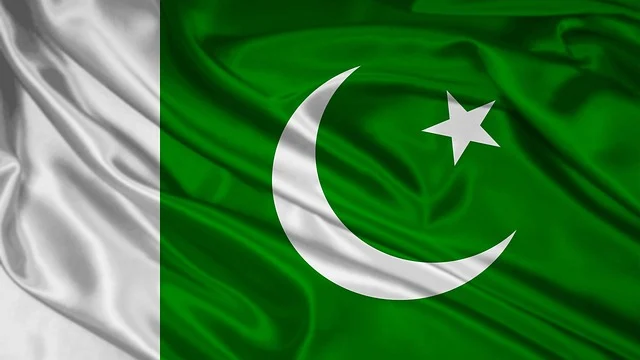The Pakistani nation recently went through a huge challenge where the world saw a united Pakistan face the aggression by India and the Almighty endowing upon as a graceful end. Initially the friends and allies of India desired that the conflict should continue as they believed India would subdue Pakistan, sooner than later. Actually, it was Modi who initiated the conflict, through the “Pahalgam” false flag operation to match Modi’s ambition, to bring Pakistan to heel and terminate once and for all, hope for a plebiscite in Kashmir, in accordance with a number of Security Council Resolutions.
India has over eight hundredthousand Army personnel in Kashmir. Their Airforce had bases along Pakistan’s borders on highest alert with total war preparation and their Navy had assembled at 300 Nautical miles south of Pakistan in a standby position for the final invasion on Pakistan from the South, along with their aircraft carrier Vikranth. Their plan was first to annihilate Pakistan Navy and then carry out landings on the Pakistani coast to catch up with their Land Forces advancing from the East.
The Kashmir issue between India and Pakistan was taken to the Security Council by India, when Pakistani backed irregulars were about to move into Srinagar. This was not the regular Pakistan Army as the then Army Chief, General Gracy had refused to do so till he got orders from Field Marshal Auchinleck.
The First Resolution on Kashmir Issue, UN Security Council No: 47 of 1948. It called for a ceasefire and recommended a free and impartial plebiscite to decide the accession of Jammu and Kashmir to India or Pakistan. The 2nd and 3rd Resolutions are 38 of 1948 and Resolution 39 of 1948. These resolutions refer to Resolution 47 and relate to the establishment of a Commission to facilitate a peaceful resolution of the Kashmir Issue. The Fourth Resolution is No: 51 of 1948, it reaffirms the principle of a free and impartial plebiscite. The Fifth Resolution is No. 80 of 1950, this resolution is about Sir Owen Dixon’s mission to facilitate a peaceful resolution of the Kashmir Issue. The Sixth Resolu tion No. 91of 1951, which Instructs the United Nations Representative to effect demilitarization and calls for arbitration, if discussions fail. Five more Resolutions were passed till 1958.
During Pervez Musharraf’s tenure as President in the early part of this century Musharraf got it presented into the Security Council, after bilateral discussions to resolve, this did not take place
Ultimately a situation like the previously orchestrated False Flag Operation at Pulwama was created by the Modi Government at Pahalgam. The Indians had planned that after blaming Pakistan for this terror attack, they would move into Pakistani administered Azad Kashmir, Gilgit and Baltistan and then take a cup of tea in Muzafarabad.
The Indian Navy over ten times larger than Pakistan Navy, had assembled her Naval Units beyond the Pakistan Navy’s Missiles range next to the Horn of Africa, without realizing that Pakistan Navy had followed all their activities and had placed their Naval units in Offensive/Defense positions, which included, PN Submarines, Missile Boats, Missile carrying Helicopters, LRMRs (Long Range Maritime Reconnaissance) Aircraft with Missiles. And in case the Indian Navy would escape from these Missile threats and advanced towards Pakistan’s Coast they would be welcomed with a rain of missiles from shore based surface to Air and Surface to Surface Missiles, from Sir Creek, located off Sajawal, then Keti Bandar, Shah Bandar, Phitti Creek, Qasim Fort, Missile battery from Churna Island, Naval Base Ormara, Pasni, Khor Kalmat, Gwadar, Turbat and finally East of Gwadar Bay. All these bases operate independently and are fully interconnected with each other. With good information about the offensive posture of PN from all these bases, Indian Navy was deterred from closing in beyond the 300 Nautical miles. The foremost target of Pakistani Naval Units was the Indian Navy’s Aircraft Carrier Vikranth, which was immediately moved East out of Arabian Sea, lest it got sunk by Pakistan Navy’s offensive units. If the War had continued even for a day more, the world would have witnessed the sinking of some major Indian Navy units at sea. India is a much larger country, it’s population is six times more than Pakistan’s and it’s Armed forces are many folds bigger, and supposedly with better Western equipment than Pakistan. They prided themselves in possessing western electronics, ECM (Electronic Counter Measures) and ECCM (Electronic Counter, Counter Measures) capabilities and particularly on the French Rafale Aircraft. Their main theme was part of their longstanding efforts to quicken Pakistan’s economic meltdown. The assumption was that they would, by destroying Pakistan’s commercial activity, destroy its means of communication i.e. airports, sea ports, and railways.
India considers itself a rival to China and has loathed CPEC and the enhancement of Chinese trade through Pakistan. The US too does not like to see China expanding her influence worldwide.
While China has already established itself internationally and would become more competitive by trading through Gwadar, this conflict proved the superiority of Chinese equipment over Western equipment and that neither India nor USA had the power to deter expansion of Chinese trade itself internationally and would become more competitive by trading through Gwadar, this conflict proved the superiority of Chinese equipment over Western equipment and that neither India nor USA had the power to deter expansion of Chinese trade and commerce through the Arabian Sea through Pakistan. India claimed to have had superior arms and ammunition, but it should be remembered that it is the man behind the weapon that ultimately counts. And finally, I hope when the Ceasefire peace accord is signed, the following points must be ensured:
(1) Both countries to respect the UN Security Council’s previous Resolutions on Kashmir, as stated above.
(2) The agreement shall be com plied with under the Security Council’s supervision.
(3) Dates will be spelled out and the program shall get followed date wise by the two states i.e. India and Pakistan.
(4) The state not complying will face sanctions by the UN, would face imposition of economic, other sanctions, etc.
(5) and finally, we should demand compliance.
Otherwise the efforts put in by the Armed Forces in Pakistan would go down the drain.




